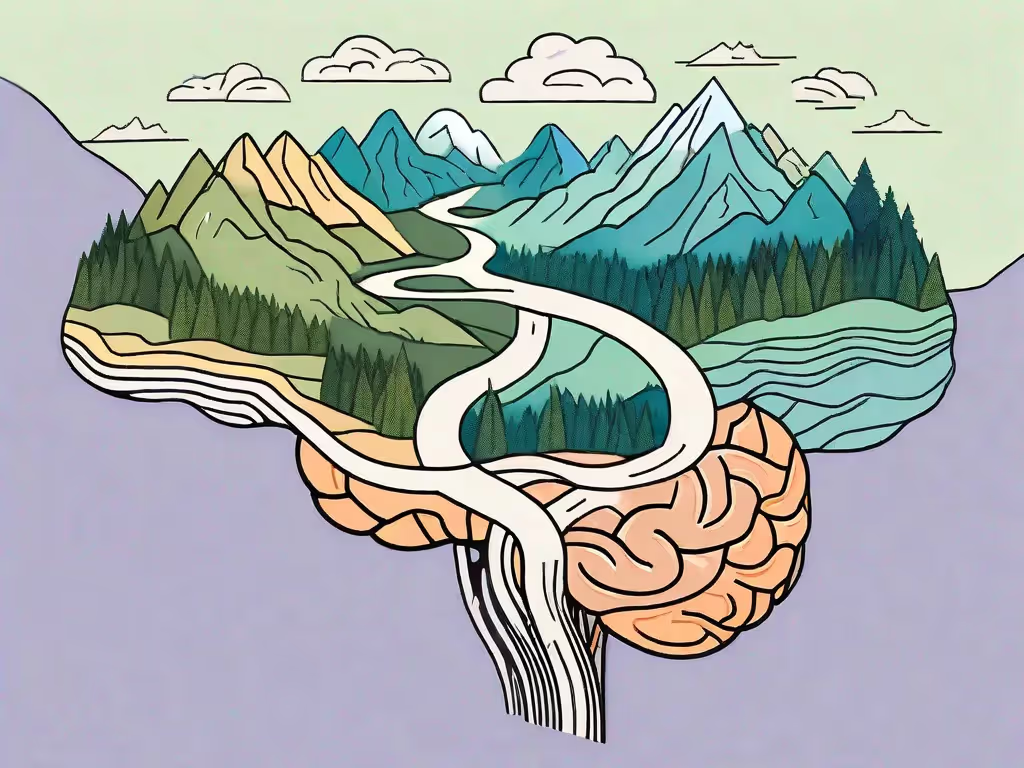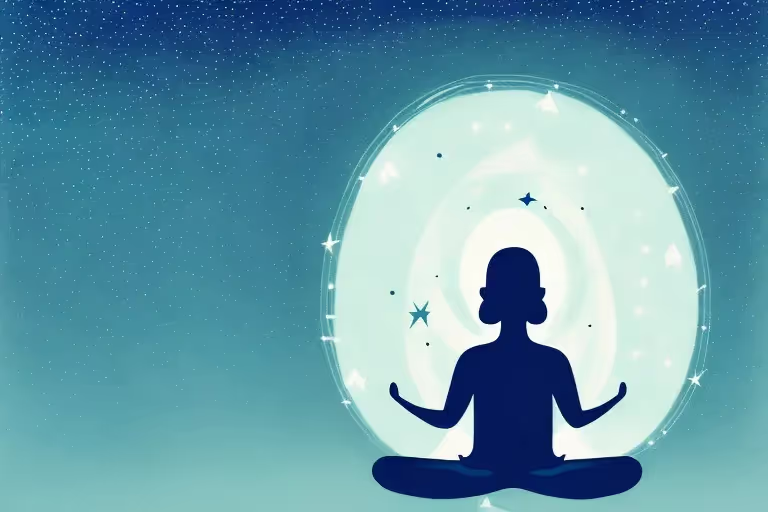The practice of mindfulness is an integral part of many meditation techniques. It is a mental state achieved by focusing one's awareness on the present moment, while calmly acknowledging and accepting one's feelings, thoughts, and bodily sensations. Mindfulness of Dharma, in particular, refers to the application of mindfulness towards understanding the teachings of the Buddha, also known as the Dharma. This article aims to provide a comprehensive explanation of this concept.
Before we delve into the specifics of Mindfulness of Dharma, it is important to understand the broader context in which it is situated. Mindfulness, in general, is a key component of Buddhist practice, but it is not exclusive to it. It has been adopted by various other spiritual traditions and has also found its way into secular practices, such as mindfulness-based stress reduction (MBSR) and mindfulness-based cognitive therapy (MBCT).
Understanding Mindfulness
Mindfulness, as a concept, is often misunderstood or oversimplified. It is not merely about being present in the moment, but also involves a non-judgmental awareness of one's mental and emotional state. It is about observing the mind without getting caught up in its activity. This allows for a clearer understanding of one's thoughts and emotions, leading to greater self-awareness and, ultimately, self-transformation.

The practice of mindfulness can be broken down into two main components: concentration and insight. Concentration involves focusing one's attention on a single object, such as the breath, a mantra, or a visual image. Insight, on the other hand, involves observing the nature of one's mind and its phenomena, leading to a deeper understanding of oneself and the nature of reality.
Origins of Mindfulness
The origins of mindfulness can be traced back to the ancient Indian spiritual traditions, particularly Buddhism. The Buddha himself is often referred to as the 'Supremely Awakened One', a title that reflects his profound level of mindfulness and awareness. The practice of mindfulness is central to the Buddha's teachings, and is considered a key factor in the path to enlightenment.
The term 'mindfulness' is a translation of the Pali word 'sati', which has a range of meanings including memory, awareness, attention, and presence of mind. In the context of Buddhist meditation, it refers to the cultivation of a clear, focused, and non-judgmental awareness of the present moment.
Benefits of Mindfulness
The benefits of mindfulness are manifold. On a psychological level, it can help reduce stress, anxiety, and depression, improve attention and focus, and enhance emotional well-being. On a physical level, it can help lower blood pressure, improve sleep, and alleviate chronic pain. On a spiritual level, it can lead to greater self-awareness, compassion, and insight into the nature of reality.
Research has shown that regular practice of mindfulness can lead to structural changes in the brain, particularly in areas associated with attention, emotion regulation, and self-awareness. These changes can have a profound impact on one's mental and emotional well-being, leading to a greater sense of peace, happiness, and fulfillment.
Understanding Dharma
The term 'Dharma' is a complex concept in Buddhism that has multiple interpretations. At its most basic, it refers to the teachings of the Buddha. However, it can also refer to the universal law of nature, the ethical principles that guide one's actions, or the ultimate truth of reality.
In the context of mindfulness, Dharma refers to the teachings of the Buddha as a guide to understanding the nature of the mind and reality. It involves the application of mindfulness towards understanding these teachings, leading to wisdom and insight.
The Four Noble Truths
The Four Noble Truths are the cornerstone of the Buddha's teachings and provide a framework for understanding the nature of suffering and the path to its cessation. They are: the truth of suffering, the truth of the cause of suffering, the truth of the end of suffering, and the truth of the path that leads to the end of suffering.
Mindfulness of Dharma involves a deep understanding and acceptance of these truths. It involves recognizing the presence of suffering in one's life, understanding its causes, realizing that it can be ended, and following the path that leads to its cessation.
The Noble Eightfold Path
The Noble Eightfold Path is the path that leads to the cessation of suffering, as outlined in the Fourth Noble Truth. It consists of right view, right intention, right speech, right action, right livelihood, right effort, right mindfulness, and right concentration.
Mindfulness of Dharma involves following this path with diligence and determination. It involves cultivating right view through the understanding of the Four Noble Truths, developing right intention through the cultivation of wholesome mental states, practicing right speech, action, and livelihood through ethical conduct, and developing right effort, mindfulness, and concentration through meditation.
Mindfulness of Dharma in Practice
Mindfulness of Dharma in practice involves the application of mindfulness towards understanding and embodying the teachings of the Buddha. It involves a deep and continuous contemplation of the Dharma, leading to a profound understanding and realization of its truths.
This practice can take many forms, depending on the individual's level of understanding and experience. For beginners, it may involve reading and studying the scriptures, attending Dharma talks, or engaging in discussion with a teacher or fellow practitioners. For more experienced practitioners, it may involve deep contemplation and meditation on the Dharma, leading to direct insight and realization.
Meditation Techniques
There are many meditation techniques that can be used to cultivate mindfulness of Dharma. One of the most common is mindfulness of breathing, which involves focusing one's attention on the breath as a means of developing concentration and mindfulness. This can be combined with contemplation of the Dharma, such as the Four Noble Truths or the Noble Eightfold Path.
Another common technique is loving-kindness meditation, which involves cultivating feelings of love and compassion towards oneself and others. This can be used as a means of developing right intention, one of the factors of the Noble Eightfold Path.
Challenges and Obstacles
Like any spiritual practice, mindfulness of Dharma can present various challenges and obstacles. These may include doubt, restlessness, laziness, attachment, and aversion. It is important to recognize these obstacles and to approach them with patience, perseverance, and compassion.
One of the most common obstacles is doubt, which can manifest as skepticism or confusion about the teachings. This can be overcome through study, reflection, and discussion with a teacher or fellow practitioners. Another common obstacle is attachment, which can manifest as clinging to certain views or experiences. This can be overcome through the cultivation of non-attachment and the understanding of impermanence.
Conclusion
Mindfulness of Dharma is a profound and transformative practice that can lead to a deeper understanding of oneself and the nature of reality. It involves the application of mindfulness towards understanding and embodying the teachings of the Buddha, leading to wisdom and insight.

While the practice can present various challenges and obstacles, these can be overcome with patience, perseverance, and compassion. Ultimately, mindfulness of Dharma can lead to a greater sense of peace, happiness, and fulfillment, and can provide a path towards liberation and enlightenment.



.webp)






.avif)

%20(1).avif)


.avif)
.avif)
.webp)


.avif)


















































































































.avif)

















.svg)









